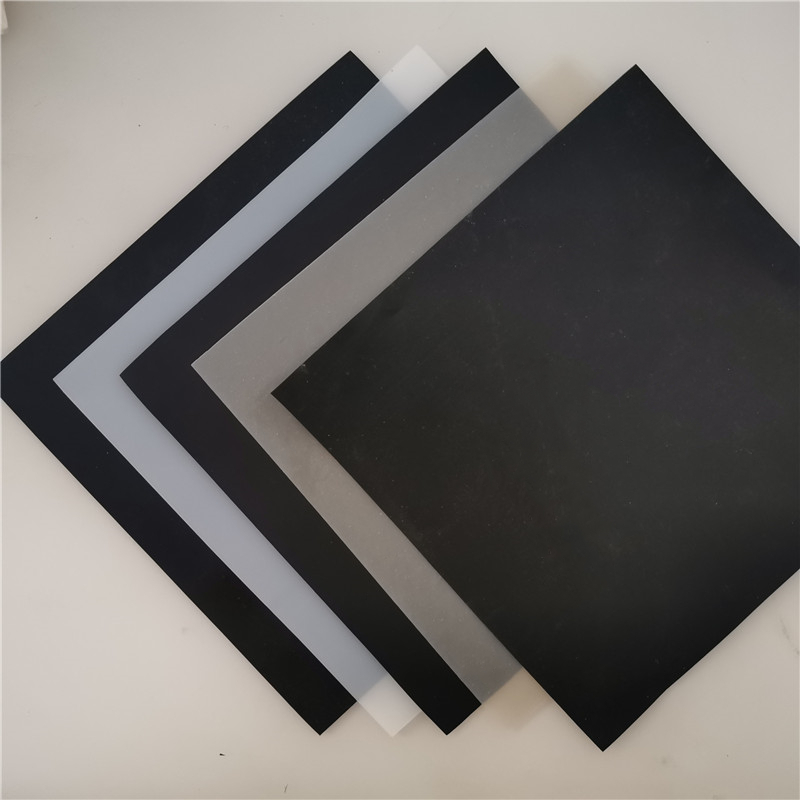详细内容:
Geotextiles are roughly classified into four major categories: textile geotextiles, nonwoven geotextiles, synthetic geotextiles and composite geotextiles. The raw materials used for geotextiles are mostly synthetic fibers, such as polyester fibers (polyester), polypropylene fibers (polypropylene), polyamide fibers (nylon), polyvinyl acetal fibers (vinylon), and polyacrylonitrile fibers (acrylic), among which polyester fibers and polypropylene fibers are the most widely used.
Polypropylene geotextile has the advantages of high strength, acid and alkali resistance, corrosion resistance, mold resistance and low-temperature resistance. According to polypropylene geoengineering
The characteristics of the fabric make it have a promising application prospect in fields such as the laying of highway and railway subgrades, the reinforcement of embankments, sewage treatment plants, landfill sites, anti-seepage of hydraulic structures, and anti-seepage of buildings.
High-strength polypropylene non-woven fabric waterproof membrane has high tensile strength and strong adaptability to the base layer or cracking and deformation. The material has good stability, is non-toxic and odorless, and has little impact on the surrounding environment. 2) The upper and lower surfaces of the high-strength polypropylene non-woven fabric waterproof membrane are rough. The non-woven fabric fibers form an irregular cross structure, creating a three-dimensional network. When bonded with special cement as the binder, the plain cement in the binder can directly penetrate into the holes on the surface of the membrane, and the membrane and cement solidify into one. There are no problems such as deterioration or aging of the plain cement slurry. Therefore, the non-woven fabric waterproof membrane is bonded together with the structural layer. Polypropylene geotextile fully meets the usage requirements of landfill sites, polyester geotextile is not suitable for the high-temperature environment of landfill sites, and recycled polyester geotextile is completely unsuitable for landfill site projects.
The strength of short-fiber needled nonwoven geotextile is significantly lower than that of spunbonded needled nonwoven geotextile, while the strength of polypropylene spunbonded needled nonwoven geotextile is significantly higher than that of polyester spunbonded needled nonwoven geotextile.

1. Anti-seepage project
In fields such as sewage treatment plants, landfill sites, pollutant storage pools, environmental protection and hydraulic structure
anti-seepage, building anti-seepage, and agriculture, as a liner used in combination with anti-seepage geomembranes, polyprop-
ylene geotextiles are required to be resistant to high temperatures, freezing, corrosion, have high tensile strength, good acid and
alkali resistance, and a long service life. Therefore, polypropylene geotextiles have a very promising application prospect.
2. Fly ash storage yard
The main component of fly ash is acidic oxide, but when fly ash is mixed with water, The pH value of the solution increases instan-
taneously and over time, reaching above 12, showing strong alkalinity. Therefore, when building a fly ash storage yard, polyprop-
ylene geotextile must be used.
3. Tailings pond storage yard
The leachate from most metal tailings ponds, such as those for gold, lead, copper, alumina, mercury, cadmium, chromium and
molybdenum, is basically alkaline, and some are strongly alkaline. Therefore, it is necessary to use acid and alkali resistant polyp-
ropylene geotextile for protective anti-seepage membrane, and supplement it with polypropylene geotextile composite drainage
net, which serves to reinforce, drain and filter back.
4. Mine heap leaching site
China is rich in mineral resources in total, but they are characterized by low grade and complex and difficult-to-process ores.
Therefore, heap leaching mining technology has been widely applied in China's mining and metallurgical industry. However, the
leakage of leachate from concentrators can pollute groundwater and soil and damage the environment. As the metal heap im-
mersion solution is alkaline, the geotextile selected must be polypropylene geotextile.
5. Ballastless track sliding layer for high-speed rail
The track structure of the ballastless track for high-speed rail, from top to bottom, is as follows: rails, fasteners, track bed plates,
and sliding layers. The sliding layer is located between the pavement slab and the bridge deck and is composed of two fabric
and one film materials. As the concrete slab of the base is alkaline, polypropylene geotextile is required for the sliding layer of
the high-speed rail.
6. Ecological bags
Ecological bags are made from high-strength, flat and stable polypropylene geotextile processed from polypropylene. They have
strong corrosion resistance, UV resistance, do not degrade, and can resist the erosion of pests, aging, acid, alkali, salt erosion and
microbial decomposition. They have the function of allowing water to pass through but not soil, and can prevent the loss of the
filling material (soil and nutrient material mixture) inside the bag. It can also achieve normal water exchange in the soil. The water
needed for plant growth is effectively maintained and replenished in a timely manner. Plants can grow freely through the bag body,
and their root systems can enter the soil of the engineering foundation, forming a re-stabilizing effect between the bag body and
the main slope surface. It is one of the important construction methods in barren mountains, mine restoration, highway slope
greening, riverbank slope protection, and inland river improvement. It is a new type of slope component material.








